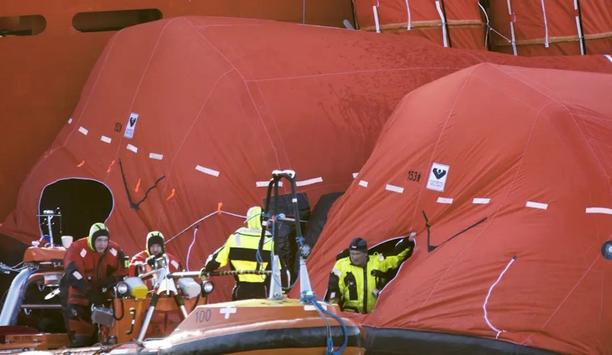Delivering exceptional durability and reliability, configured for ease of deployment from all platforms and offering class-leading sensor and navigation performance, HUGIN Edge is the newest member of the HUGIN family of AUVs.
The new design combines elements of HUGIN’s carbon monocoque approach used with success for the last 20 years coupled with extensive hydrodynamic modelling to refine the hull’s low-drag shape. HUGIN Edge stands out as a next-generation vehicle designed specifically to answer the performance and efficiency challenges set by the modern world.
New features and abilities
HUGIN Edge includes significant new features and capabilities. These include an innovative forward-looking sonar design providing 3D sensing capabilities for improved trajectory planning and directional collision avoidance coupled to traditional forward scanning methodology.
To enable greater interoperability, the vehicle is equipped with the latest open interfaces for integration to 3rd party planning and mission management tools. There are also new tools specifically designed to optimise results for every deployment. Central to these are goal-based mission planning tools and mission execution.
Mission planning interface
In-mission adaptive execution allows HUGIN Edge to make several decisions autonomously The mission planning capabilities provide a higher-level mission planning interface, requiring less specialist knowledge and input by the operator. Mission objectives may include sounding density, or detection probability enabling the AUV to calculate the actual waypoints, operational parameters and sensor configuration.
In-mission adaptive execution allows HUGIN Edge to make several decisions autonomously, continuously replanning during mission execution as more information about the surrounding environment is gathered by the sensors. It is these in-mission edge-processing capabilities that drive step-changes in both performance and efficiency for all operations.
About HUGIN Edge
Measuring less than 4 metres long, HUGIN Edge weighs approximately 300kg. It is packaged with the latest battery technology to provide more than 24 hours of operation at depths of up to 1000 metres. The general arrangement includes the next generation of KONGSBERG synthetic aperture sonar, a high-frequency multibeam echosounder and a swappable camera or sub-bottom profiler.
This configuration has been designed to cover most geophysical survey requirements, as well as mine-countermeasures, rapid environmental assessment, search and recovery, as well as the survey of critical national infrastructure.
Design and operation
HUGIN Edge is designed to operate from Uncrewed Surface Vehicles (USVs), small surface vessels and from shore From inception, HUGIN Edge is designed to operate from Uncrewed Surface Vehicles (USVs), small surface vessels and from shore. The design has been developed around Kongsberg’s automated Launch and Recovery (LAR) with battery charging through inductive power providing true over the horizon operations.
This capability removes the human from the field of operations, enabling supervision from afar to minimising operational risk, maximise safety and deliver the lowest carbon footprint.
Overall changes in HUGIN
Richard Mills, Vice President of Marine Robotics Sales at KM said: “Since the first dive of HUGIN on 7th March 1993 it has evolved into the most successful commercial off-the-shelf autonomous underwater vehicle ever made. In that time, the shape has changed, from a smooth low-drag design to a more traditional cylindrical hull form focused on modularity and providing a flexible configuration."
"Over the last few years, we have released the high-performance HUGIN Superior, the pinnacle of survey capabilities within autonomous vehicles and HUGIN Endurance which stretches the operational range to 2200-line kilometres in a single dive. HUGIN Edge returns to our original design philosophy of a smaller low drag body using the common architecture and user interface enabling interoperability of all HUGIN systems."
"Hydrodynamic efficiency is combined with optimized sensor integration to provide the best of both worlds: efficiency and productivity.”















